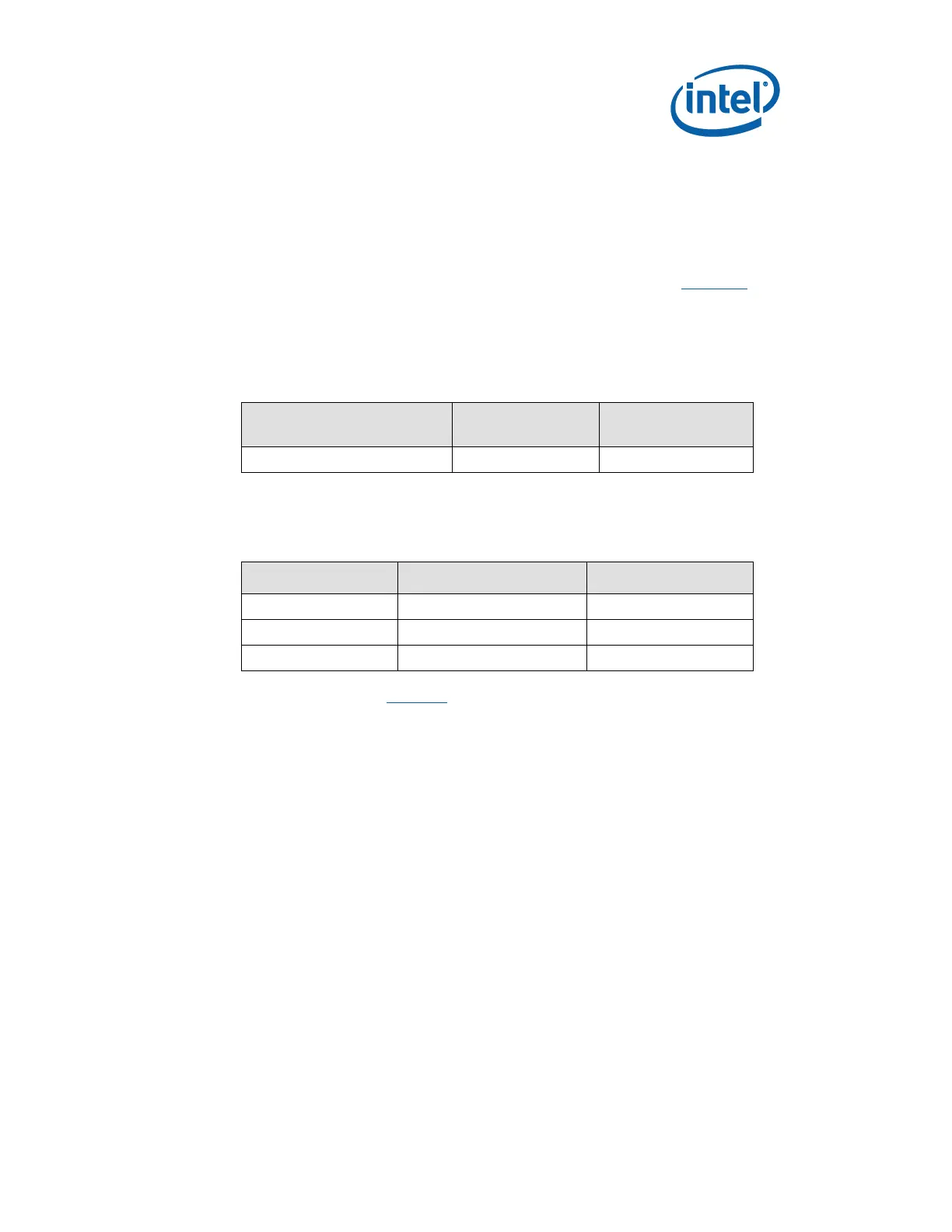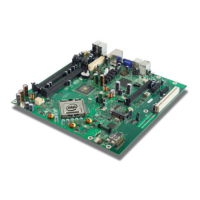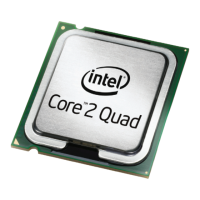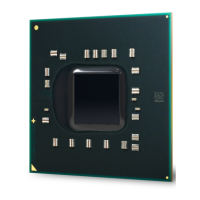Dev Kit Manual 31 323094
3.7.2.4 Soft Audio/ Soft Modem
Intel
®
High Definition Audio functionality (Intel
®
HD Audio) is enabled through the Mott
Canyon 4 daughter card. The Chipset supports four Intel HD Audio CODECs. All four are routed
to MDC header through resistor stuffing options. By default CODEC 0 and 1 will be connected
to the MDC card. An on-board header is provided at J9E7 and J9E4 for this purpose. No direct
connection is provided for the Intel
®
High Definition Audio Card on the motherboard; the Mott
Canyon 4 card is required to enable the Intel HD Audio functionality. See Section 5 for more
information on the Mott Canyon 4 card.
The motherboard supports low voltage (LV) high definition I/O CODEC. Resistor stuffing
options are used to select between 3.3V I/O and 1.5VI/O.
Table 9. Selection of I/O Voltage for the Intel
®
High Definition Audio
I/O Voltage for the High
Definition Audio
3.7.2.5 SATA Storage
Table 10. SATA Ports
These connectors mentioned in Table 10 are for the serial data signals. The motherboard has a
power connector J8J1 to power the serial ATA hard disk drive. A green LED at CR7G1
indicates activity on SATA channel.
The motherboard shares the power connector for both SATA 1 and 2. Due to this only one of
the serial ATA channel (Port1 by default) supports the hot swapping capability. Hot swap on
Port 1 can be used only when the Port 2 is not used. A Y-Power cable needs to be connected
first to the device on Port 1 before connecting the signal cable. When hot swap is not desired,
both Port 1 and Port 2 can be used. A jumper J7H1 is provided to enable hot plug/removal on
port-1.
The eSATA drives should be externally powered. Hence, there is no power supply support for
them on the motherboard.
3.7.2.6 USB Connectors
The Chipset provides a total of 14 USB 2.0/1.1 ports.
Four ports (0, 1, 2, and 3) are routed to a four-stacked USB connector (J3A3) at the
back panel.
Two USB ports (8 and 9) are routed to a RJ45 + Dual USB Connector (J4A1) on the
back of the chassis.

